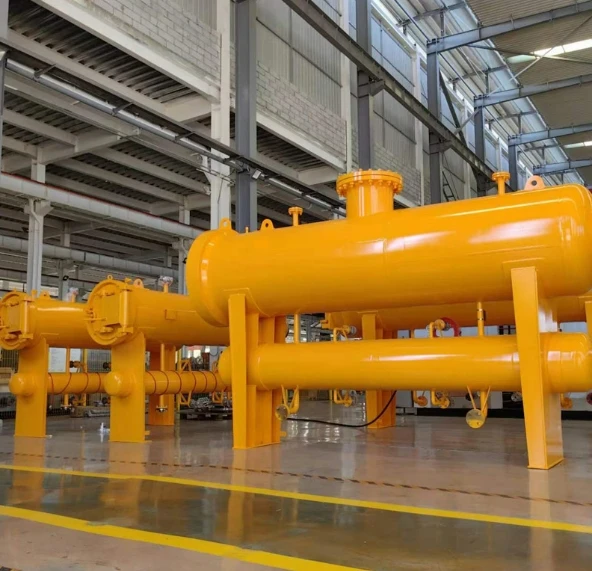
Nov . 10, 2024 10:49
Back to list
Pressure Reduction Station Overview and Operational Insights
Pressure Reduction Stations Ensuring Safety and Efficiency in Gas Distribution
Pressure reduction stations, often abbreviated as PRS, play a crucial role in the natural gas distribution system. These facilities are vital for managing the pressure of gas entering a network of pipelines, ensuring that it is delivered safely and efficiently to end-users. As natural gas demand continues to rise globally, understanding the functions and importance of pressure reduction stations becomes essential.
The Function of Pressure Reduction Stations
The primary purpose of a pressure reduction station is to decrease the high pressure of natural gas produced or transported from gas fields and processing facilities to a much lower, manageable level suitable for consumption. Natural gas is typically transported through pipelines at pressures ranging from 500 to 1,500 psi (pounds per square inch). However, residential and commercial consumers generally require gas at pressures as low as 4 to 60 psi. The PRS comprises various components, including pressure regulators, filters, and metering equipment.
1. Pressure Regulation The heart of any PRS is its pressure regulation system. This typically includes multiple stages of regulation to ensure that the gas is brought down to the desired pressure in a controlled manner. By using pressure regulators, the station can adjust the gas flow to meet varying consumption demands without risking a pressure surge.
2. Safety Features Safety is paramount in gas distribution. PRS are equipped with multiple safety features to prevent accidents. These include relief valves, which automatically release excess pressure if it exceeds safe levels, and isolation valves, which can be used to shut down the flow in emergencies. These systems work together to ensure the safety of both the infrastructure and the end-users.
.
The Importance of Pressure Reduction Stations
محطة تخفيض الضغط

Pressure reduction stations are critical in maintaining the reliability and safety of the natural gas supply chain. Here are several key reasons why they are indispensable
1. Safety Assurance By controlling and reducing pressure, PRS protect residential and commercial consumers from the risks associated with high-pressure gas pipelines. Any malfunctions in high-pressure systems could lead to catastrophic failures, making PRS an essential safeguard.
2. Efficiency in Distribution PRS facilitate the smooth transition of gas from transportation pipelines to distribution networks. This ensures that consumers receive gas at a pressure level that maximizes efficiency and minimizes waste.
3. Adaptability to Demand Fluctuations Natural gas demand can fluctuate significantly based on factors such as time of day, weather, and seasonal changes. Pressure reduction stations enable utility companies to adjust the flow of gas in real-time, ensuring that supply meets demand without risking system integrity.
4. Environmental Impact By enabling efficient gas distribution, PRS help reduce environmental impacts. Efficient gas usage leads to lower emissions, contributing to a cleaner environment. Moreover, clean natural gas serves as a transitional fuel towards more sustainable energy sources.
Conclusion
In conclusion, pressure reduction stations are a fundamental component of the natural gas distribution network. They ensure the safe, efficient, and reliable delivery of natural gas to consumers, protecting both the infrastructure and the public. As the global demand for natural gas grows, the importance of these stations continues to rise, solidifying their role in the modern energy landscape. Understanding and investing in PRS technology is essential to meet the challenges of energy distribution in the future.
Latest news
-
Safety Valve Spring-Loaded Design Overpressure ProtectionNewsJul.25,2025
-
Precision Voltage Regulator AC5 Accuracy Grade PerformanceNewsJul.25,2025
-
Natural Gas Pressure Regulating Skid Industrial Pipeline ApplicationsNewsJul.25,2025
-
Natural Gas Filter Stainless Steel Mesh Element DesignNewsJul.25,2025
-
Gas Pressure Regulator Valve Direct-Acting Spring-Loaded DesignNewsJul.25,2025
-
Decompression Equipment Multi-Stage Heat Exchange System DesignNewsJul.25,2025

